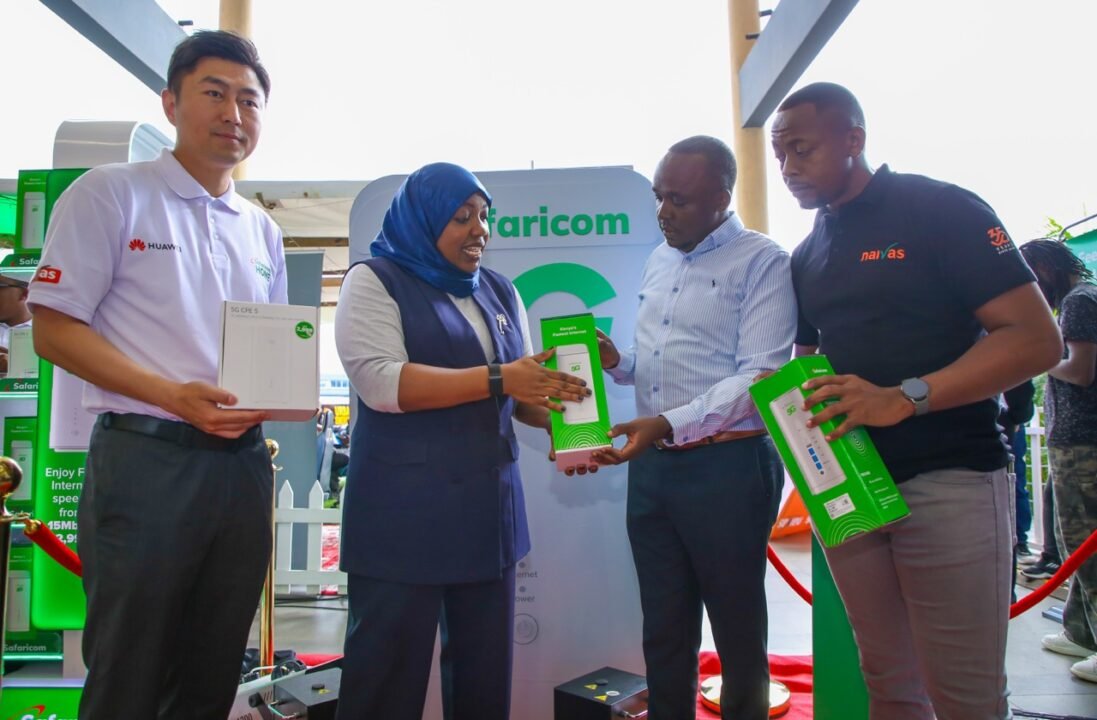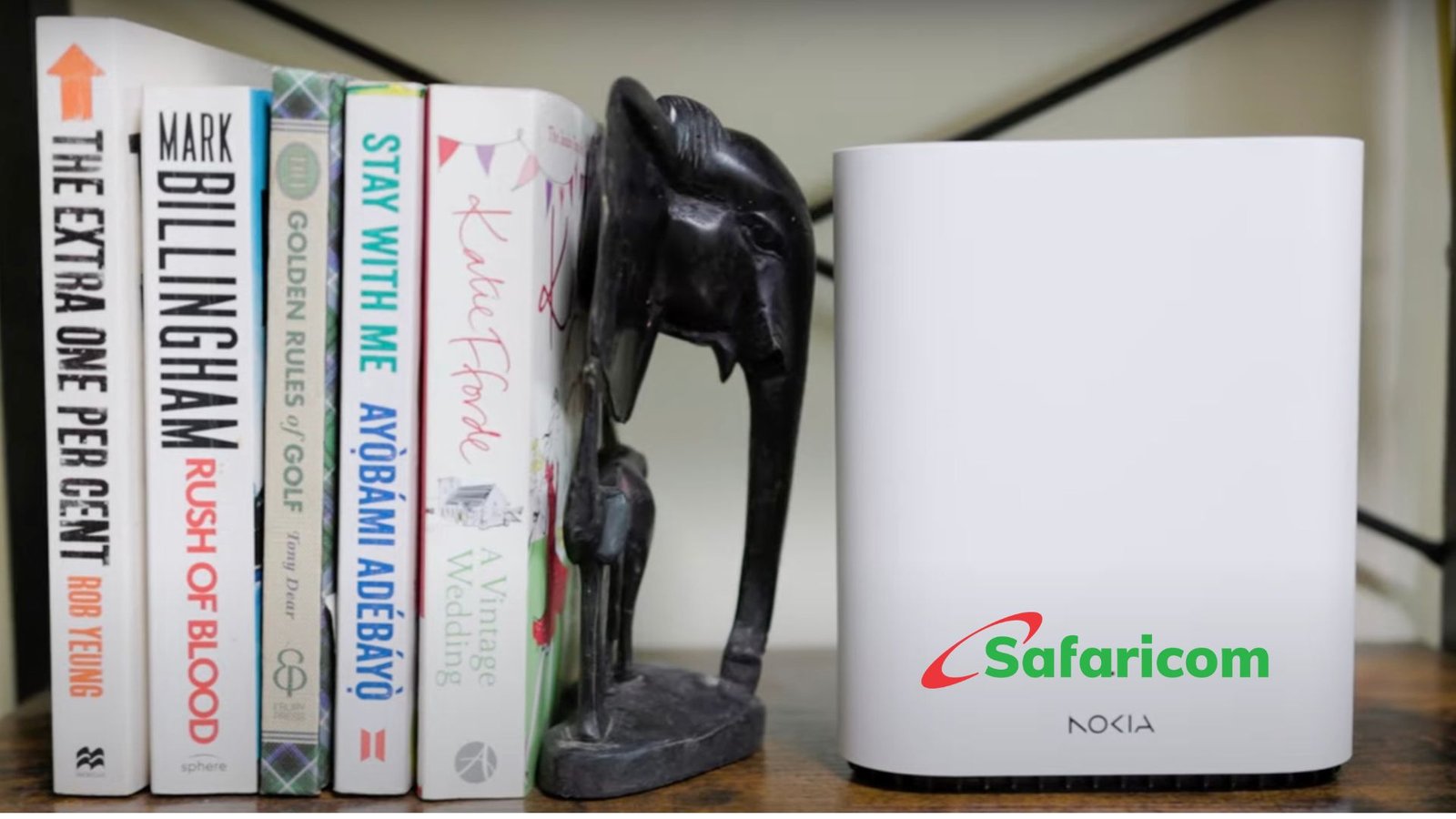Safaricom is continuing its aggressive push to get 5G into Kenyan homes, and its new front is the grocery aisle. The telco has announced its 5G home internet routers will now be sold in all Naivas supermarkets nationwide. This isn’t a niche tech-shop rollout; this is a mainstream retail invasion. The company is placing its home internet hardware directly in the aisles of Kenya’s largest retail chain, right where you do your weekly grocery shopping.
The move, announced on October 29th, 2025, means the telco’s 5G Home Internet devices are now available in all 110+ Naivas outlets. This strategy isn’t new, but it is escalating. It follows an identical deal Safaricom struck with Quickmart earlier this year, which put its 4G and 5G routers on the shelves of all 61 Quickmart stores.

The official announcement is wrapped in celebratory language – it’s Safaricom’s 25th “Silver Jubilee” and Naivas’s 35th anniversary. But make no mistake, this is a calculated strategic offensive. Safaricom is trying to make its 5G home internet service the default choice for Kenyans, and it’s using a classic consumer hardware strategy to do it: massive price drops and massive retail availability.
Just a few years ago, getting a Safaricom 5G router would set you back over KES 20,000. Now, both the 4G and 5G routers are being sold for a flat KES 2,999. This isn’t just a sale; it’s a fundamental shift in strategy, likely aimed at fending off competition from satellite players like Starlink while simultaneously making its own legacy Home Fibre service look obsolete.
So, is the KES 2,999 Hardware Any Good?
Actually, yes. For that price, the hardware is excellent.
In our review of the Baicells router (EG3065M), we found it to be one of the best 5G deals in Kenya. For KES 2,999, you get a device with:
- Wi-Fi 6: This is the modern standard, crucial for handling many devices (laptops, phones, smart TVs, smart bulbs) at once without lag or congestion.
- A Built-in Battery: This is the killer feature. Safaricom officially rates it for three hours, but in our testing, we’ve seen it last closer to four. In a country with frequent power cuts, having your internet connection survive is a game-changer for remote work and streaming.
- Easy Setup: It’s a “plug-and-play” solution. You buy the box, take it home, and activate it yourself. No waiting for a technician to come and drill holes in your wall.
- Good Ports: The router also includes three Ethernet ports for stable, wired connections to a gaming console, desktop PC, or smart TV.
The router is a solid 4.5/5-star piece of kit. The main hardware complaint is that it’s not the faster Wi-Fi 6E, but at this price, no one should expect it to be.
The Real Story: 5G Is Cannibalizing Safaricom’s Own Home Fibre
This retail push is so aggressive that Safaricom’s 5G wireless is now a demonstrably better deal than its own fixed-line Home Fibre service for many users.
When you compare 5G Wi-Fi directly to Home Fibre, the 5G wireless plans often win on speed, price, and data allocation.
Let’s look at the mid-tier plans:
- Safaricom 5G Wi-Fi: For KES 4,000, you get 50 Mbps speeds with a Fair Usage Policy (FUP) limit of 1.5 TB (1500 GB).
- Safaricom Home Fibre: For KES 4,100, you get 30 Mbps speeds with an FUP limit of 1 TB (1000 GB).
For KES 100 less, the 5G plan gives you nearly double the speed and 500 GB more data. Furthermore, Home Fibre is subject to a 1:4 “contention ratio,” which means your speeds can be slowed down during peak hours as you share bandwidth with neighbors. The 5G wireless service doesn’t have this specific problem, though its speeds can fluctuate based on network congestion.
To be fair, a stable fibre line will almost always offer lower latency (ping), which is crucial for competitive online gaming. But for raw download speed and data for streaming and browsing, 5G now wins.
Safaricom did just upgrade its entry-level Home Fibre plan from 10Mbps to 15Mbps for the same KES 2,999 price, but that just highlights the dilemma. For the exact same monthly price, you could get the 15Mbps fixed fibre or buy the 5G router and sign up for its entry-level 10Mbps plan. This move makes the 5G vs. Fibre choice the central dilemma of Safaricom’s home internet strategy.
The Fine Print and the “Gotchas”
It’s not all perfect, of course. While the hardware is good and the high-end plans are solid, there are a few catches buried in the details.
1. The “User Limit” That Isn’t Real
Safaricom’s official website lists bizarrely low “user limits” for its 5G plans. For example, it claims the 10Mbps plan is “limited to 2 individual users” and the 50Mbps plan is “limited to 4.”
This is, thankfully, not true. As we tested and reported, these limits don’t seem to be enforced at all. We easily connected seven different devices (phones, laptops, smart TVs) to the base 10Mbps plan and streamed on multiple screens without a single “you have reached your limit” warning. The router itself can handle 32 connections. The “limit” appears to be misleading marketing language that is actively discouraging people from signing up.
2. The Real Catch: The Entry-Level FUP
The real gotcha is the Fair Usage Policy (FUP) on the cheapest plan. The KES 2,999 10Mbps plan comes with a 250GB data cap. For a home internet connection in 2025, that is tiny. Think of it as a “teaser” plan. A few nights of 4K Netflix streaming, a couple of “Call of Duty” updates, and you’re done.
This low cap feels intentional. It’s designed to get you in the door, but most users will burn through it and be forced to upgrade to the 50Mbps plan for KES 4,000, which comes with a much more realistic 1.5TB data cap.
3. Checking Your Data is a Chore
As noted in our router review, the user experience has one massive flaw: you cannot check your data balance in the MySafaricom app. The app simply doesn’t show your 5G router’s data usage. To find out how much of your FUP you’ve used, you have to call or email customer care. In 2025, this is a ridiculous, almost user-hostile oversight for a flagship digital product.
Where You Can Get One
Safaricom is making its 5G ambition clear: it wants to be the new king of home internet, and it’s willing to undercut its own fibre business to do it.
This new deal with Naivas, on top of the Quickmart partnership, means you can now buy the KES 2,999 4G/5G router at:
- All Naivas Supermarket outlets
- All Quickmart outlets
- Safaricom Retail Shops
- Authorized Safaricom dealers
- Online via Masoko.co.ke
The company says this is all part of its “commitment to innovation and digital transformation.” What it really is, is a full-scale retail assault to own the home internet market, one supermarket shopper at a time.








